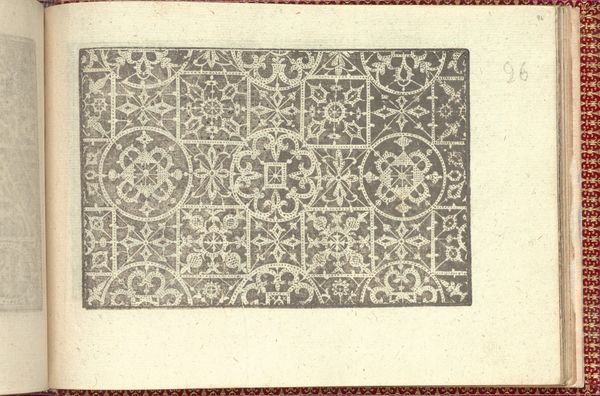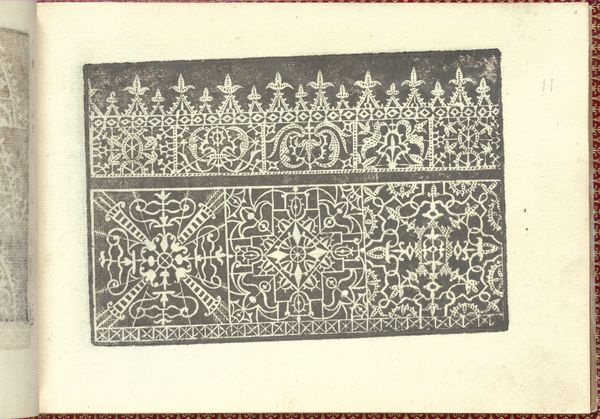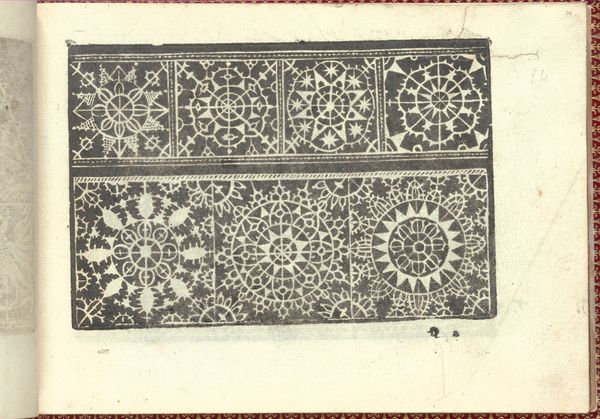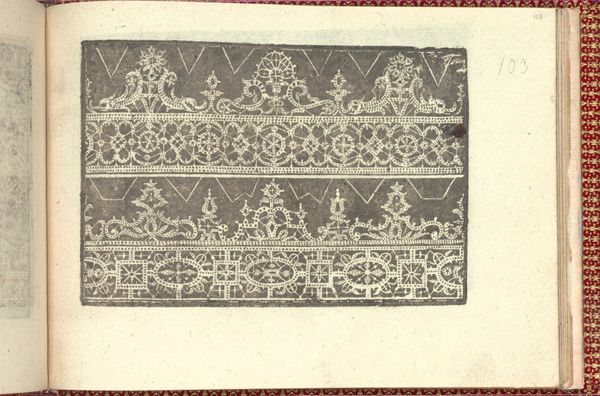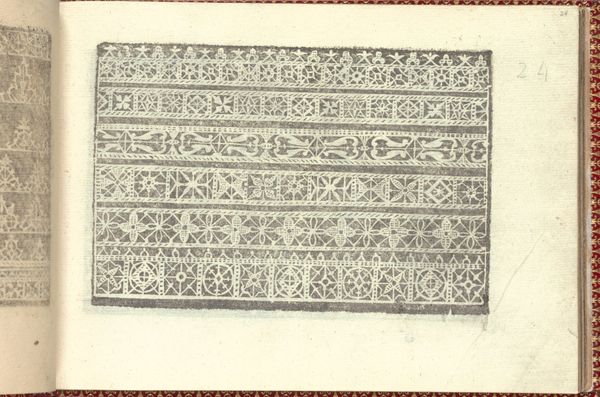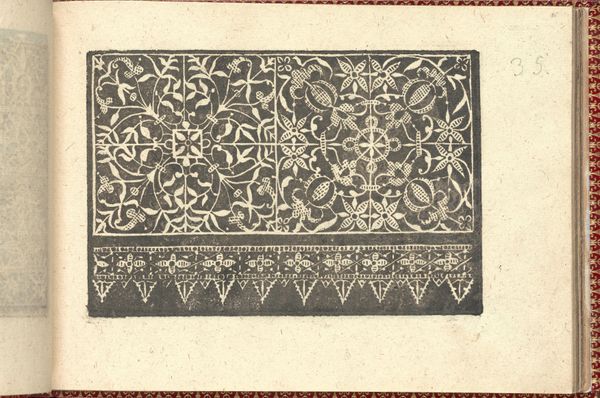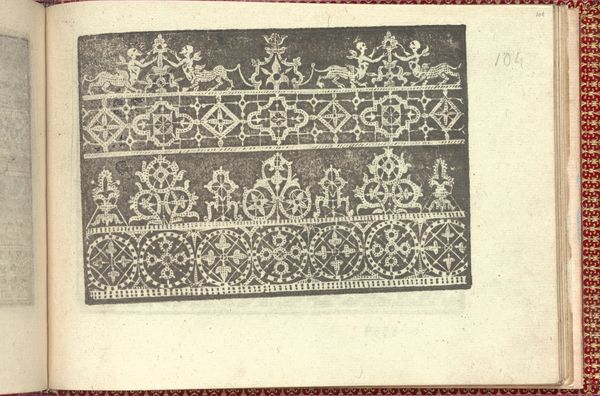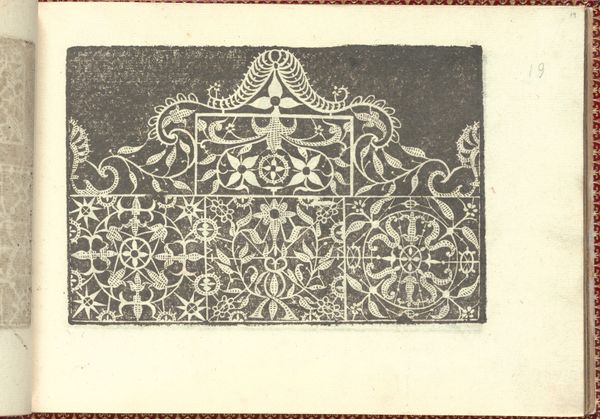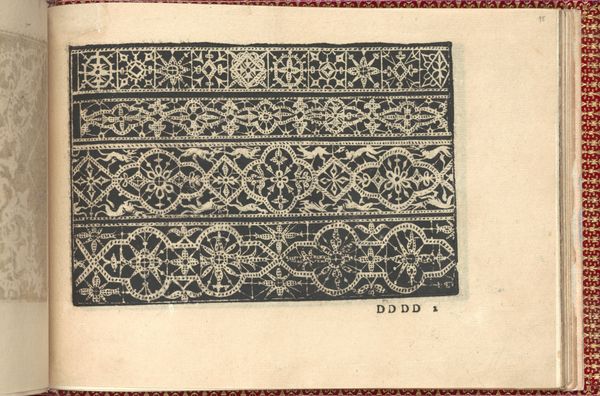
Corona delle Nobili et Virtuose Donne: Libro I-IV, page 39 (recto) 1601
0:00
0:00
drawing, ornament, print, intaglio, engraving
#
drawing
#
ornament
# print
#
book
#
intaglio
#
11_renaissance
#
line
#
decorative-art
#
engraving
Dimensions: Overall: 5 1/2 x 7 11/16 in. (14 x 19.5 cm)
Copyright: Public Domain
Editor: So, this is a page from Cesare Vecellio’s *Corona delle Nobili et Virtuose Donne*, published in 1601. It's a book of lace patterns, done in engraving. The detail is amazing. It feels so…intricate and almost mathematical. What’s your read on this particular image? Curator: It's fascinating to consider this within the broader social history. Lace was a significant status symbol in the Renaissance, right? These books served as guides, standardizing and disseminating fashionable patterns among elite women, shaping visual culture. But who actually made the lace based on these designs? Editor: That's a good point. I hadn't thought about the actual labor involved. Were these books primarily for wealthy women to execute themselves, or were they meant for professional lace makers? Curator: A key question! I suspect, especially with these intricate patterns, it would often have been skilled artisans creating the work. The book then serves as a sort of catalog, dictating what designs are socially desirable and therefore economically valuable. How does seeing it that way change your perception? Editor: It definitely adds a layer. It's no longer just pretty patterns, but a reflection of economic power and a very early form of mass-produced design. Were there other ways this kind of imagery was politically charged? Curator: Absolutely. Sumptuary laws, for example, often regulated who could wear what kind of lace. These pattern books, by making these styles accessible *in print*, challenge that rigid hierarchy. Did pattern books affect the creative role for individual makers in any apparent ways? Editor: I guess if everyone’s working from the same source material, you might see less regional variation, more standardization. That’s slightly sad! It seems the personal flair or particular local traditions may be lost in favour of broader adoption and wider audiences. Curator: Exactly. It makes you think about the tensions between individual artistry and the pressures of commercial success, even back then. This has certainly given me a deeper appreciation of the sociopolitical implications of something as seemingly decorative as a lace pattern.
Comments
No comments
Be the first to comment and join the conversation on the ultimate creative platform.
